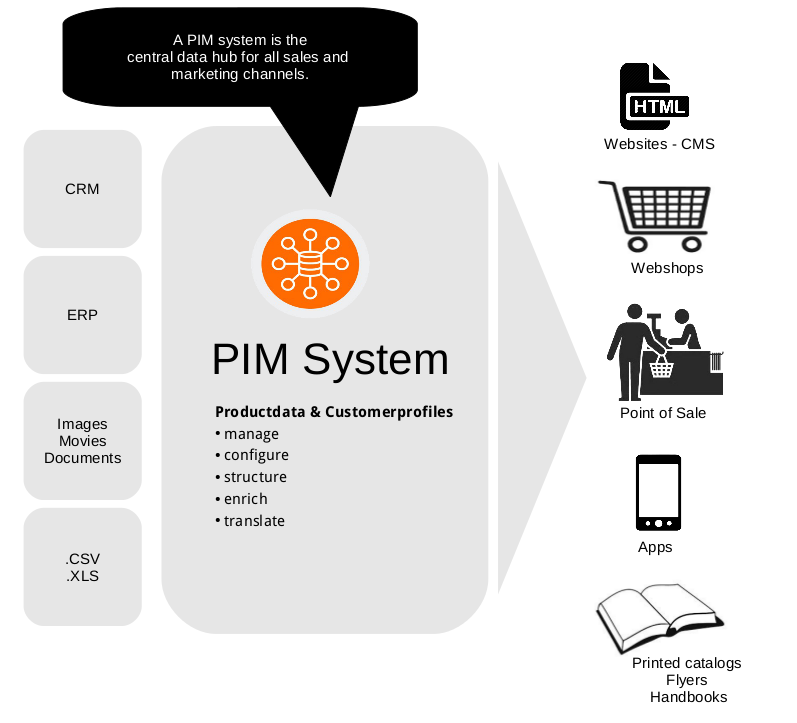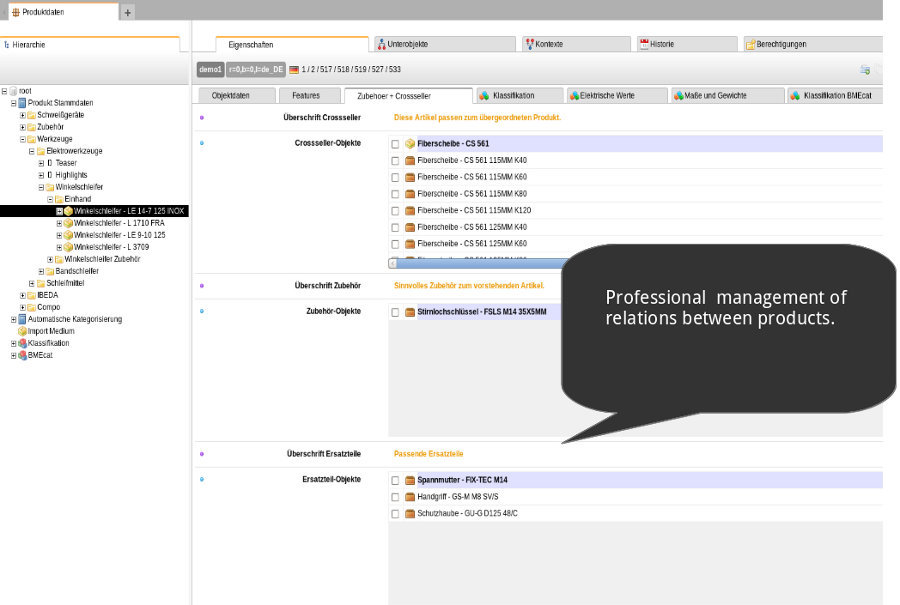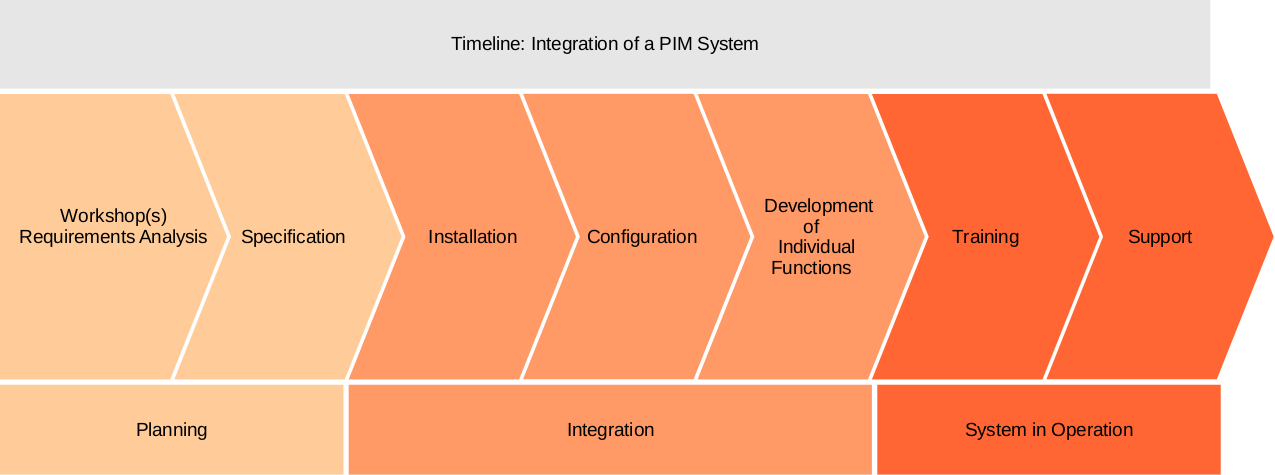What is a PIM System?
A PIM system is a product information management application that allows you to manage catalog and product data centrally and provide it for different types of output. Often, a PIM system is regarded as a complement to ERP systems for efficient data maintenance, translation management, and the control of expenditure on different marketing and distribution channels.

Functionality of a PIM system: Central data storage for omni-channel marketing
Problem: Decentralized Data Storage
It often occurs in companies that product data is not stored centrally in a single point, but distributed across various departments. In addition, the data is stored in various formats and several languages.
This may result in a situation where part of the data gets lost or the same data is stored multiple times, resulting in inefficiencies and increased costs.
Furthermore, it is often not clear whether the existing data is still up-to-date and accurate. To efficiently manage product data and reduce the costs for the overall product data management, it is worthwhile to think about the acquisition of a PIM system.
Video: Manage Products in a Product Information Management System
A PIM system should meet the following requirements:
- Media-neutral storage and management of product data
- Centralized data maintenance, regardless of location
- Standardized connection of output channels: Web sites, web shops, retailers (point of sale), print advertising
- Easy catalog creation
- Good usability
- Flexible user management
- Efficient translation management
- Output in standard formats such as BMEcat
- Interfaces for the integration of ERP, CRM, CMS and shop systems

Fig.: Relationships between products can also be maintained in a PIM system.
Introduction of a PIM System
The implementation of PIM project should be done jointly by the competent in-house department (product management, marketing, sales, IT/e-commerce) and service providers with experience in this area. The introduction of a PIM system is usually includes the following project stages:
1 Initiation
2 Requirements analysis
3 Specification of content and scope
4 Validation of content and scope
5 Installation, configuration, programming
6 Tests, corrections
7 Training
8 Go-live
9 Support

Fig.: Integration of a PIM system Fig.: Integration process of a PIM system
Advisory Services and Implementation
Product data can be efficiently managed with Sepia Alterra PIM. Despite its abundance of functions, the software is very easy to use and designed to save resources. One of the great strengths of Alterra PIM is its adaptability to specific customer requirements, which must be considered in the context of a PIM integration. The Sepia Integration Team provides advisory services to companies on the introduction of the system and makes demand-oriented adjustments.
Request advisory services right here >>>
Contact
Sepia GmbH & Co. KG
Ernst-Gnoss-Strasse 22
D-40219 Düsseldorf - Germany
Phone: +49 211 51 419 75
Phone alternative: +49 211 74 958 712 0
E-Mail: info@sepia.de
Looking for consultation or a web demo?
Get it here.

